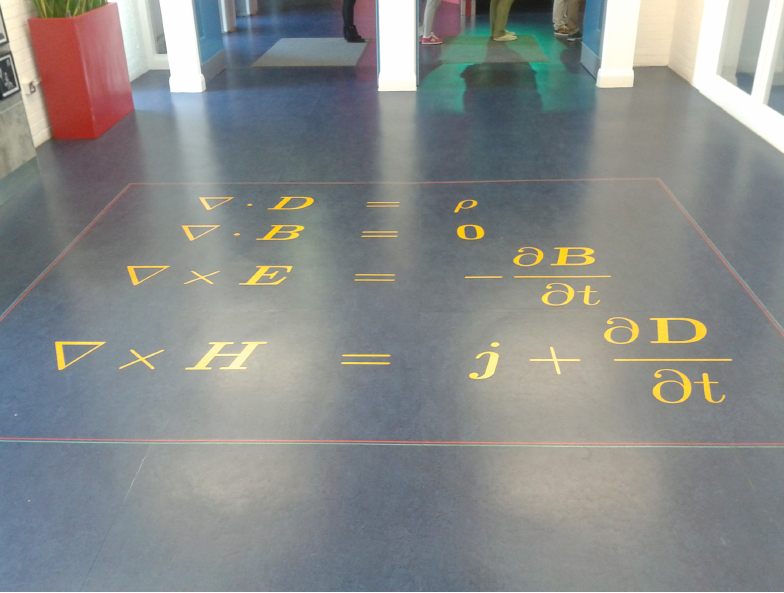Seminar on This Week’s Finds
Posted by John Baez
Here’s something new: I’m living in Edinburgh until January! I’ll be working with Tom Leinster at the University of Edinburgh, supported by a Leverhulme Fellowship.
One fun thing I’ll be doing is running seminars on some topics from my column This Week’s Finds. They’ll take place on Thursdays at 3:00 pm UK time in Room 6206 of James Clerk Maxwell Building, home of the Department of Mathematics. The first will be on September 22nd, and the last on December 1st.
We’re planning to
1) make the talks hybrid on Zoom so that people can participate online:
https://ed-ac-uk.zoom.us/j/82270325098
Meeting ID: 822 7032 5098
Passcode: XXXXXX36
Here the X’s stand for the name of a famous lemma in category theory.
2) record them and eventually make them publicly available on my YouTube channel.
3) have a Zulip channel on the Category Theory Community Server dedicated to discussion of the seminars: it’s here.
More details soon!
I have the topics planned out….
The theme for these seminars is representation theory, interpreted broadly. The topics are:
- Young diagrams
- Dynkin diagrams
- q-mathematics
- The three-strand braid group
- Clifford algebras and Bott periodicity
- The threefold and tenfold way
- Exceptional algebras
Seven topics are listed, but there will be 11 seminars, so it’s not a one-to-one correspondence: each topic is likely to take one or two weeks. Here are more detailed descriptions:
Young diagrams
Young diagrams are combinatorial structures that show up in a myriad of applications. Among other things, they classify conjugacy classes in the symmetric groups Sn, irreducible representations of Sn, irreducible representations of the groups SL(n) over any field of characteristic zero, and irreducible unitary representations of the groups SU(n).
Dynkin diagrams
Coxeter and Dynkin diagrams classify a wide variety of structures, most notably Coxeter groups, lattices having such groups as symmetries, and simple Lie algebras. The simply laced Dynkin diagrams also classify the Platonic solids and quivers with finitely many indecomposable representations. This tour of Coxeter and Dynkin diagrams will focus on the connections between these structures.
q-mathematics
A surprisingly large portion of mathematics generalizes to something called -mathematics, involving a parameter . For example, there is a subject called -calculus that reduces to ordinary calculus at . There are important applications of -mathematics to the theory of quantum groups and also to algebraic geometry over , the finite field with elements. These seminars will give an overview of -mathematics and its applications.
The three-strand braid group
The three-strand braid group has striking connections to the trefoil knot, rational tangles, the modular group PSL(2,), and modular forms. This group is also the simplest of the Artin–Brieskorn groups, a class of groups which map surjectively to the Coxeter groups. The three-strand braid group will be used as the starting point for a tour of these topics.
Clifford algebras and Bott periodicity
The Clifford algebra is the associative real algebra freely generated by anticommuting elements that square to . Baez will explain their role in geometry and superstring theory, and the origin of Bott periodicity in topology in facts about Clifford algebras.
The threefold and tenfold way
Irreducible real group representations come in three kinds, a fact arising from the three associative normed real division algebras: the real numbers, complex numbers and quaternions. Dyson called this the threefold way. When we generalize to superalgebras this becomes part of a larger classification, the tenfold way. We will examine these topics and their applications to representation theory, geometry and physics.
Exceptional algebras
Besides the three associative normed division algebras over the real numbers, there is a fourth one that is nonassociative: the octonions. They arise naturally from the fact that Spin(8) has three irreducible 8-dimensional representations. We will explain the octonions and sketch how the exceptional Lie algebras and the exceptional Jordan algebra can be constructed using octonions.


Re: Seminar on This Week’s Finds
Great to revisit these topics.
I’m reminded of my speculative thought
following on from a comment on the Langlands Program by David Ben-Zvi here